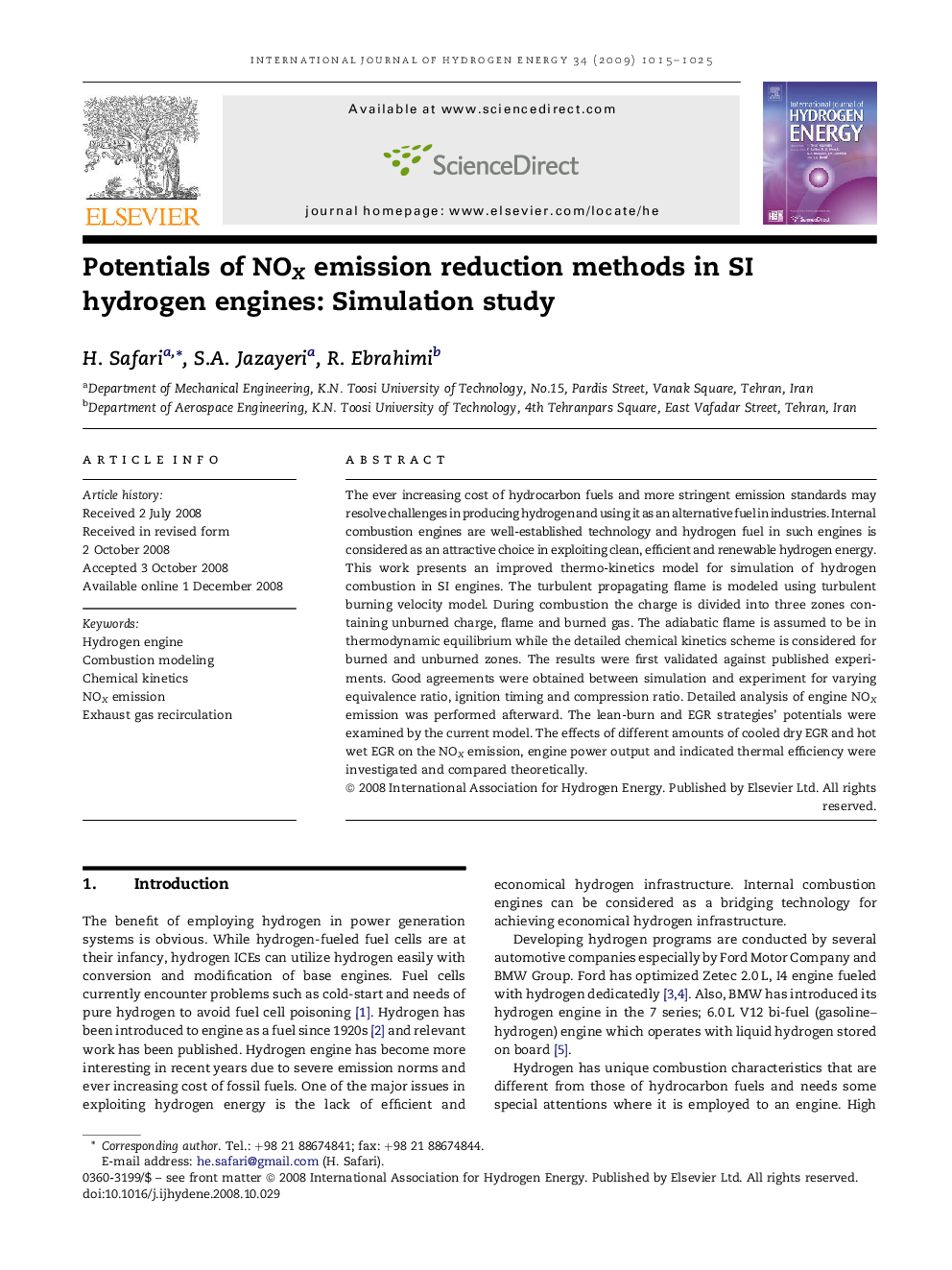| Article ID | Journal | Published Year | Pages | File Type |
|---|---|---|---|---|
| 1283486 | International Journal of Hydrogen Energy | 2009 | 11 Pages |
The ever increasing cost of hydrocarbon fuels and more stringent emission standards may resolve challenges in producing hydrogen and using it as an alternative fuel in industries. Internal combustion engines are well-established technology and hydrogen fuel in such engines is considered as an attractive choice in exploiting clean, efficient and renewable hydrogen energy.This work presents an improved thermo-kinetics model for simulation of hydrogen combustion in SI engines. The turbulent propagating flame is modeled using turbulent burning velocity model. During combustion the charge is divided into three zones containing unburned charge, flame and burned gas. The adiabatic flame is assumed to be in thermodynamic equilibrium while the detailed chemical kinetics scheme is considered for burned and unburned zones. The results were first validated against published experiments. Good agreements were obtained between simulation and experiment for varying equivalence ratio, ignition timing and compression ratio. Detailed analysis of engine NOX emission was performed afterward. The lean-burn and EGR strategies' potentials were examined by the current model. The effects of different amounts of cooled dry EGR and hot wet EGR on the NOX emission, engine power output and indicated thermal efficiency were investigated and compared theoretically.
